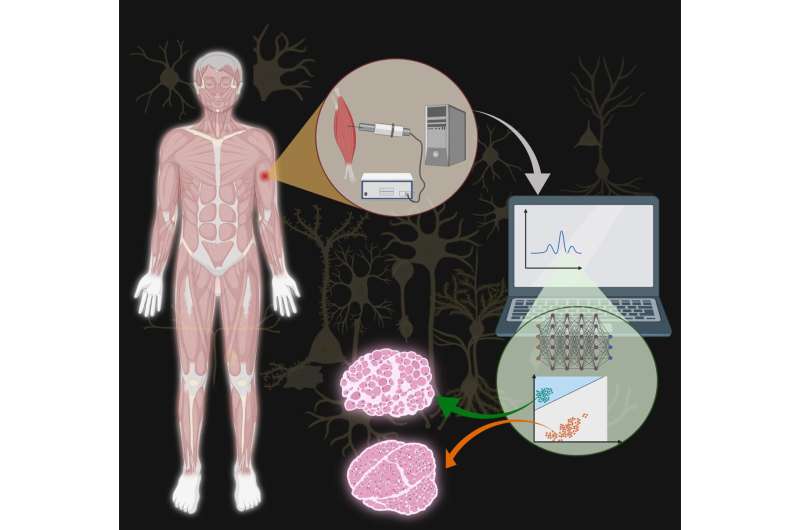
A team of researchers has developed a promising new approach to detecting neuromuscular disorders using intramuscular electromyography (iEMG). In a pilot study, the automatic diagnostic system showed high accuracy in three muscle types and low computational time. Their article, “Intramuscular EMG classifier for detecting myopathy and neuropathy”, was published in the International Journal of Imaging Systems Technology.
The authors are Shobha Jose, Thomas George Selveraj, Jobin T. Philip, Sairamya Nanjappan Jothiraj, and Subathra Muthu Swamy Pandian from Karunya Institute of Technology and Sciences in Tamil Nadu, India, Kenneth Samuel of Eastern University in St. David’s, Pennsylvania, and Vikram Shenoy Handiru, and Easter S. Suviseshamuthu, from the Center for Mobility and Rehabilitation Engineering Research at Kessler Foundation in West Orange, New Jersey.
Invasive intramuscular EMG has been shown to be an effective tool for identifying neuromuscular abnormalities such as myopathy and neuropathy. Myopathy, a disorder of muscle fibers, and neuropathy, which reflects damage to peripheral nerves, exhibit different patterns of motor unit action potentials.
To facilitate the interpretation of these signals, the team developed an iEMG classifier framework based on a new feature called 1-Dimensional Center Symmetric Local Binary Pattern (I-D, CSLBP), which enhanced the performance of a binary (myopathy and neuropathy) classification task.
The electromyographic signals from the biceps brachii, deltoideus, and vastus medialis muscles. 25 individuals were studied: 10 healthy controls, 7 with myopathy, and 8 with neuropathy. Classification accuracy for the three muscle types exceeded 92%, and computational time was low.
Source: Read Full Article



